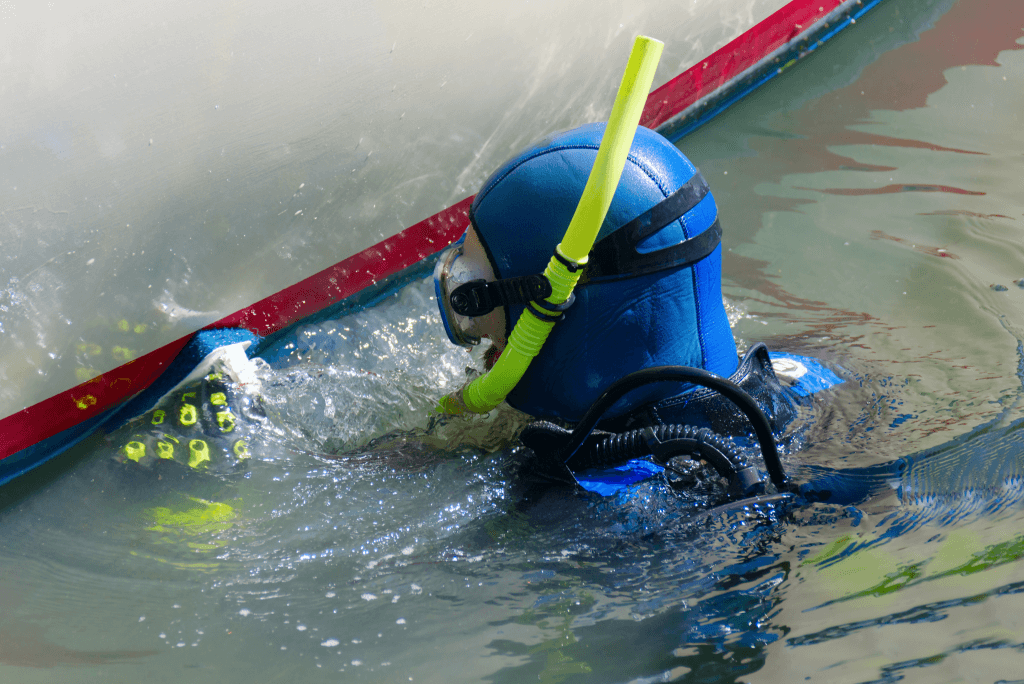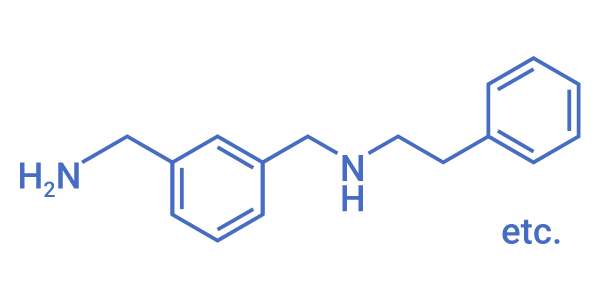Structure and Features

✔Good underwater coatability: little resin dispersion or agglomeration in water
✔Good saltwater resistance: no change for 12 weeks in 5% salt spray test
✔Low water absorption: good durability in water
✔High pencil hardness: shows high abrasion resistance
Gaskamine-240 (G-240) is an epoxy resin curing agent with high hydrophobicity. When G-240 is used as a curing agent for underwater coating, there was almost no dispersion of the paint into the water. The cured product has high saltwater resistance, pencil hardness, and low water absorption, so it shows good durability after underwater coating, and high corrosion protection performance and extended repair period can be expected.
Curing Performance (23°C, pure water)

Evaluation of the underwater coating performance of G-240 in pure water showed no resin agglomeration during the curing process. In addition, cured material using G-240 did not deteriorate after 12 weeks of salt spray testing, and weight gain due to immersion in pure water was small, so high durability in water can be expected.
Appearance (5% salt spray test, 35°C / 12 weeks)

To evaluate durability in seawater, cured products were coated with various curing agents in air at 23°C/50%RH and cured for one week, then sprayed with 5% salt water at 35°C for 12 weeks. While blisters formed on the resin surface of Mannich-modified polyamines in general, no degradation was observed with G-240.
Formulation & Curing Performance (23°C, pure water)

G-240 has lower viscosity than Mannich-modified polyamines, making it easier to operate. It also has excellent resistance to salt water and low water absorption, so high durability in water can be expected. In addition, dispersion and agglomeration of the resin during underwater coating are not seen to a great extent, and high underwater coating performance can be expected due to its good finger-drying property.
※jER828:Mitsubishi Chemical jER®
Appearance (after 1 day, 23°C, pure water)

Resin agglomeration during the curing process of coating in water can cause unevenness in the film. On the other hand, G-240 showed no resin agglomeration.
Curing Time (Semi-dry)

Fast curing is important for underwater coating to shorten repair time. Curing time can be shortened by adding 10wt% salicylic acid as a curing accelerator.
Underwater Coatability (pure water)

In addition to steel plates, underwater coating is also important for mortar and concrete used for piers and other structures. 10wt% salicylic acid can be added to G-240 to enable underwater coating of mortar and concrete as well. Underwater coating of steel plates is also possible under low-temperature conditions.
Formulation & Curing Performance (5°C, in pure water)

Appearance (after 1 day, 5°C)

Low temperature coatability is important for underwater coating in winter and polar regions. While Mannich-modified polyamines cause resin agglomeration when applied at low temperatures, G-240 with salicylic acid does not agglomerate and exhibits good underwater coatability even at low temperatures.



